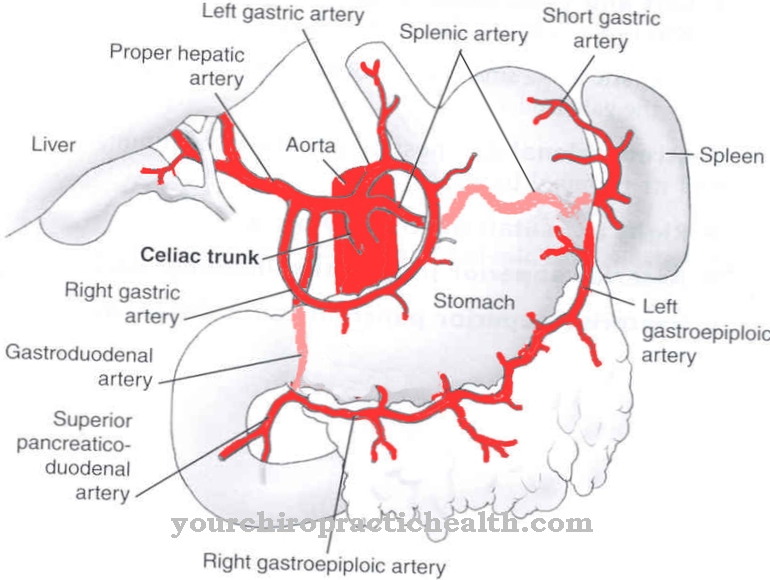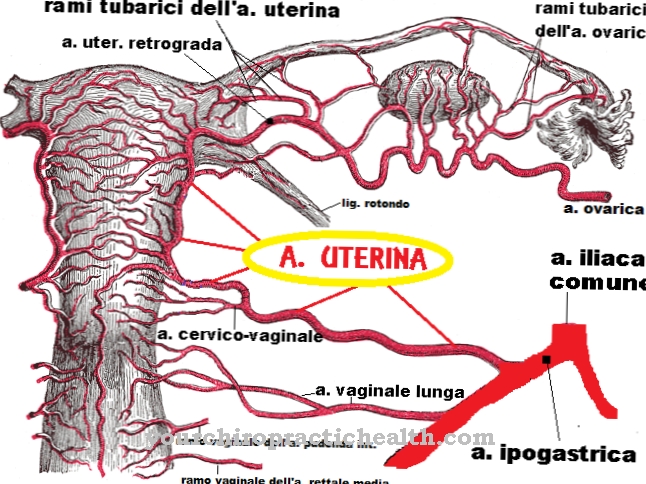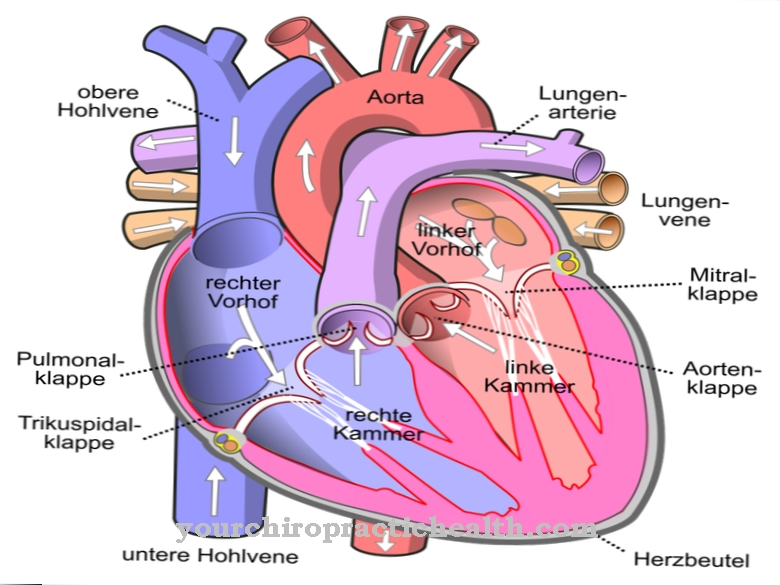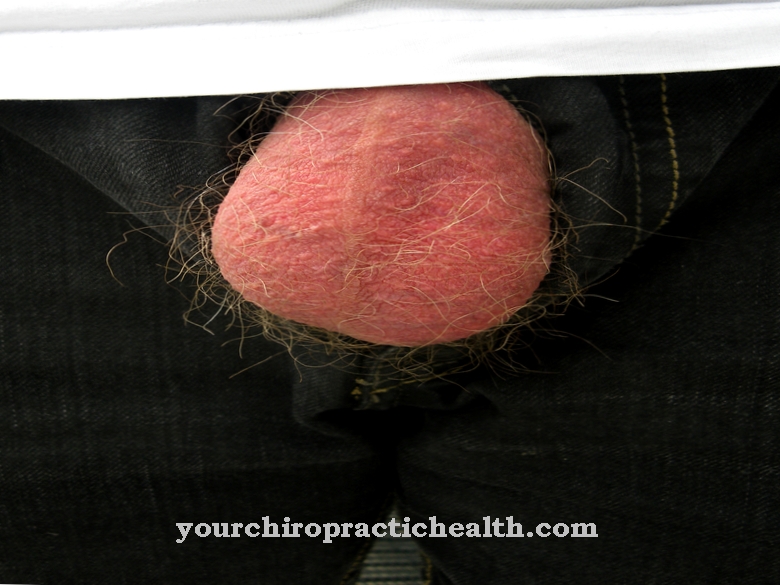Of the Swivel head is one of two joint surfaces. Bones are flexibly connected to the joint head and the associated socket. In the event of dislocation, the joint head slides out of the associated joint socket due to external forces.
What is the rod end?
The human body has 143 joints. Articulated connections between two bones give the joint a certain mobility and are therefore a crucial part of human mobility and motor skills. Each joint consists of articular cartilage, the joint space with synovial fluid, the joint capsule and a stabilizing ligamentous apparatus.
The heart of a joint, however, are the joint head and the joint socket. The socket is the concave surface of the joint. It accommodates the convex joint head. This type of connection occurs in the human body in innumerable places where two bones meet. The one end of a bone that meets directly with one another almost always functions as a joint head. The respective shape of the joint head depends mainly on the shape of the joint socket and the range of motion realized by the joint.
The joint head of ball joints such as the hip or shoulder joint therefore has a different shape and a different range of motion than the joint head in hinge joints, saddle joints, swivel joints, egg joints or flat joints.
Anatomy & structure
The joint head is always shaped so that it fits into the associated joint socket. Joint sockets are concave in shape. The shape of the joint head is accordingly convex. The exact anatomy depends mainly on the type of joint.
The shoulder and hip joints are ball joints. The shoulder joint has a comparatively small socket and a proportionally relatively large joint head. The joint head of the hip joint, on the other hand, is largely enclosed by the deep, pit-like socket. This means that the anatomy of a joint head is characterized by differences even if it is the same type of joint. Hinge joints like the humeroulnar joint consist of a cylindrical joint head in a hollow cylinder-like joint socket.
Saddle joints consist of concave surfaces. Your joint head sits like a rider on the saddle-like pan. The radioulnar joint is a swivel joint and as such has a peg-shaped joint head, the receptacle of which forms a short, trough-like pan. The joint head of egg joints, on the other hand, is much smaller than the corresponding socket. Flat joints are a special form of the joint. The flat vertebral arch joint, for example, consists of joint surfaces that slide against each other, the head of which is not absorbed by a socket in the narrower sense.
Function & tasks
In the human body, joint heads almost always rest in the associated joint socket and thus correspond to one of two joint-participating bone surfaces. The joint head can move in its socket receptacle. This movement is similar to the movement of a mortar inside a bowl. The exact type of movement of the joint head depends on the type of joint in each individual case. For all bones in an articulated connection, the bony surface shape and thus the shape of the joint head and socket determine the range of motion that is possible in the joint.
With ball joints like the shoulder, the ball-shaped joint head can move in all directions in its socket. With hinge joints such as the ankle joint, the joint head in the socket is only able to move around a certain axis. The joint is therefore inhibited by its natural design, since the cylindrical head in the channel-like pan can only be moved in one specific direction. The saddle joints include the thumb saddle joint, which enables a greater range of motion and enables the joint head to move in two directions that are perpendicular to each other.
With pivot joints, the joint head can only rotate in its socket. The joint head has different movements to function. Together with the joint socket, the joint head connects free bone ends and moves more or less flexibly in this connection. Thus the joint head fulfills just as relevant tasks in terms of motor skills and mobility as the muscles or the innervation of the muscles. Due to its unit with the socket of a joint, for example, extension, flexion, approaching movements, splaying movements and external or internal rotations of limbs are possible.
Diseases
Joints can be affected by various injuries from passive or active violence. In some cases the joint head loses contact with the joint socket. If the head of the joints does not move in the associated socket, but has slipped outwards, we are talking about a so-called dislocation.
In most cases, the dislocation is the result of a ruptured joint capsule or torn ligament. After such a crack, the joint surfaces are no longer adequately stabilized and slide apart. An incomplete dislocation is called a subluxation. In addition, medicine differentiates between direct and indirect dislocation. The direct dislocation always occurs when external force acts directly on a joint and thus causes a ligament or capsule tear through which the joint head leaves the joint socket.
The indirect type of dislocation occurs when the physiological motor inhibition of the joint is forcibly overcome. A long bone acts as a lever arm and lever the head out of the socket. It is not just a joint head outside the socket that causes problems. Deformations of the joint head can also have pathological value, for example in the context of acquired or congenital diseases. One such disease is Legg-Calvé-Perthes disease.
In the rare disease, the femoral head becomes necrotic on one or both sides of the body. The processes of osteogenesis try to compensate for the dead bone tissue by building up bone. However, the newly built femoral head is mostly deformed and therefore often no longer fits into the associated socket. Diseases such as arthrosis deformans or inflammation in the joint can also result in deformation of the joint head.













.jpg)

.jpg)
.jpg)











.jpg)